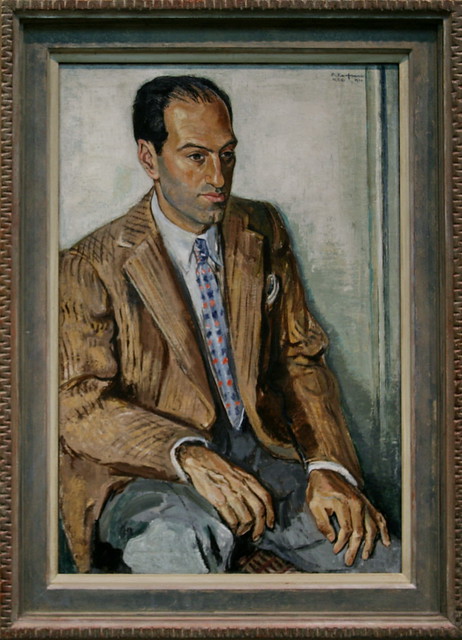 |
George Gershwin (1898 – 1937), an American composer
(Photo credit: Wikipedia)
|
Gershwin came from a family that had music in their blood. In addition to his brother getting into music, his sister too, started taking it up early in life but gave it up in favor of family life. Gershwin was tutored by a number of tutors who didn't make much of an impact on him and his music until he met his last piano teacher - Charles Hambitzer. Hambitzer taught him the proper way of playing the piano.
Paving his knowledge of European music history, introduced him to the music of the past and encouraged him to attend a concert when he could. When he eventually did this, he was quick at reproducing the same music note of note after returning home after the concert. He also studied with Rubin Goldmark and Henry Cowell.
When 15, George quit school and started working at Jerome H. Remick and Company as a "song-plugger" where he took a salary of $15 a week. His first commercial success was tasted with Rialto Ripples in 1917 but he really hit it big time in 1919 with his composition Swanee, which shot him to fame all over the United States.
In 1916, he worked with Aeolian Company and Standard Music Rolls doing the recording and arranging piano rolls. There is no official count of the rolls that he came up with, but it is said that he has hundreds of piano rolls to his credit. He credited his work here with a number of aliases - some which were Fred Murtha and Bert Wynn. He made rolls for reproducing pianos made by Duo-Art and Welte Mignon. He had a small little stint getting into vaudevilles playing pieces by Nora Bayes and Louise Dresser most often at the vaudeville shows that he performed at.
In 1924, he and brother Ira worked on their first musical together - a comedy - Lady be Good. The songs from Lady Be Good - Fascinating Rhythm and the title track Lady Be Good - were soon to be standards. Then on, a string of musical followed with most of them being very successful. Some of them are Girl Crazy, Strike Up the Band, Funny Face, Show Girl and Oh, Kay!. From among these, Girl Crazy became the first ever musical to win a Pulitzer Prize apart from spurning the hits I Got Rhythm and Of Thee I Sing.
The same year he made music for a musical, he also composed his first classical piece - Rhapsody In Blue. The piece was, orchestrated by Ferde Grofe, played by Paul Whiteman's band. He tried a hand at learning something from greats like Nadia Boulanger and Maurice Ravel, but Ravel rejected the proposition to teach him saying that bring his technique mainstream would ruin his jazz specialty.
His stay there inspired the piece An American In Paris. The piece didn't do well at the press and with critics when he played for the first time on the 13th of April in Carnegie Hall. But it, like some of his other early hits, became many jazz band's standard repertoires.
After getting fed up with the music scene in Paris, he decided to return home to the United States. His best was yet to come. Two years before his death in 1937, he composed his most appreciated work yet. Porgy and Bess premiered on Broadway in 1935.
In 1937, Gershwin began complaining of being able to smell burnt rubber and of headaches. He was diagnosed with a condition of a brain tumor called glioblastoma multiforme. Despite the condition, he continued to work. He played with the San Francisco Philharmonic Orchestra in the same year.
This was his last performance before he collapsed and died and dies while working on the score of The Goldwyn Follies.
Two months after his death, the score of They Can't Take That Away From Me, from the film Shall We Dance won the Academy Award for Best Original Song.
|






